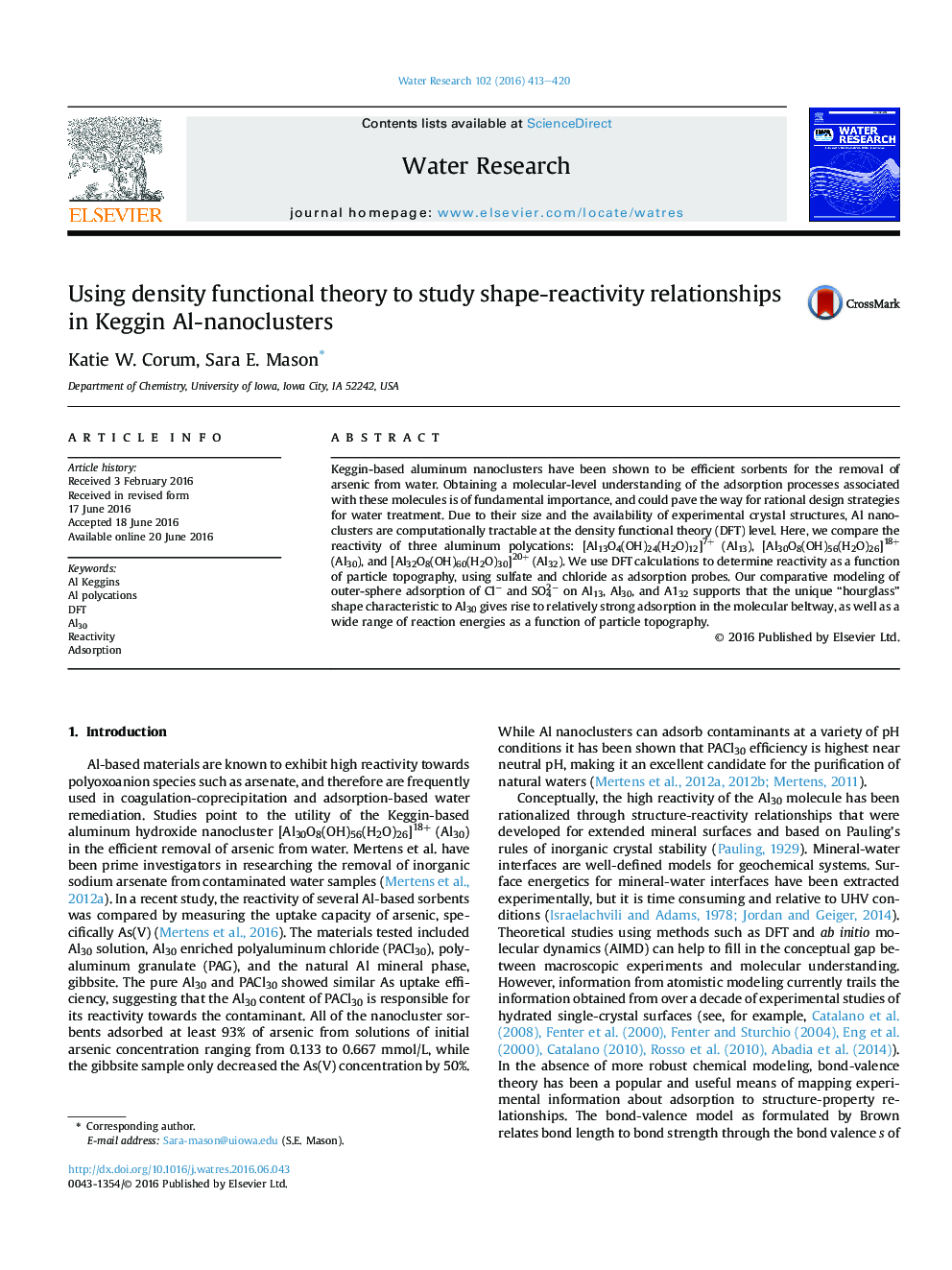| کد مقاله | کد نشریه | سال انتشار | مقاله انگلیسی | نسخه تمام متن |
|---|---|---|---|---|
| 4480871 | 1623066 | 2016 | 8 صفحه PDF | دانلود رایگان |
• Aluminum hydroxide nanoclusters are efficient sorbents in water remediation.
• Density functional theory studies enable molecular-level studies of adsorption.
• Results show that the shape of the nanoclusters plays major role in reactivity.
• Shape-reactivity relationships can be predicted using the electrostatic potential.
Keggin-based aluminum nanoclusters have been shown to be efficient sorbents for the removal of arsenic from water. Obtaining a molecular-level understanding of the adsorption processes associated with these molecules is of fundamental importance, and could pave the way for rational design strategies for water treatment. Due to their size and the availability of experimental crystal structures, Al nanoclusters are computationally tractable at the density functional theory (DFT) level. Here, we compare the reactivity of three aluminum polycations: [Al13O4(OH)24(H2O)12]7+ (Al13), [Al30O8(OH)56(H2O)26]18+ (Al30), and [Al32O8(OH)60(H2O)30]20+ (Al32). We use DFT calculations to determine reactivity as a function of particle topography, using sulfate and chloride as adsorption probes. Our comparative modeling of outer-sphere adsorption of Cl− and SO42− on Al13, Al30, and A132 supports that the unique “hourglass” shape characteristic to Al30 gives rise to relatively strong adsorption in the molecular beltway, as well as a wide range of reaction energies as a function of particle topography.
Figure optionsDownload high-quality image (191 K)Download as PowerPoint slide
Journal: Water Research - Volume 102, 1 October 2016, Pages 413–420
